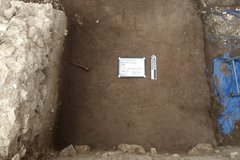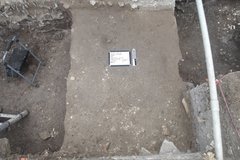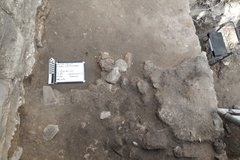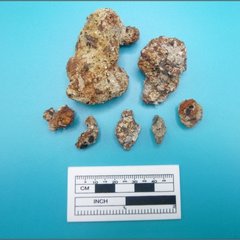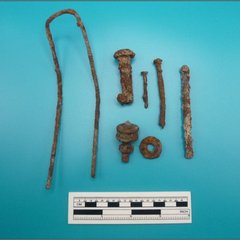Three excavation units were active this week- EU-2, EU-4, and EU-6. On Monday archaeologists had to document any damage from the heavy rain that fell last week; luckily there was minimal damage but the soil within the units remained wet through the end of the week.
In EU-2 archaeologists reached the pre-cultural occupation layers. The soil was the same clay found at the bottom of all previous units. There was a significant drop in artifacts, with only some shell fragments recovered. Archaeologists reached a depth of 130 cm below surface and only have two additional levels to excavate.
In EU-4, archaeologists excavated to a depth of 90 cm below surface. Artifact counts overall were lower than previous levels, however there were more ceramics recovered in this level than the previous level. Soil was beginning to become more compact and difficult to excavate through. There were also patches of eroded limestone that resembled an intentional surface, however there was not enough present to confirm this suspicion.
EU-6 reached a maximum depth of 50 cm below surface by the end of the week. Archaeologists encountered a continuation of Feature 8, which was previously encountered in EU-5. This feature is a burning episode consisting of ashy loam, an abundance of charcoal, and limestone rubble. The shape of the feature is oblong and when referencing documentation from EU-5 the entire feature was approximately 2 meters at its maximum length. After delineating the feature, the archaeologists began documentation, including photos and a scaled map. Additionally, at a similar elevation to Feature 8 archaeologists encountered two large stones extending east from the Long Barrack wall. These stones may be a part of a walkway, but further investigation is required.

